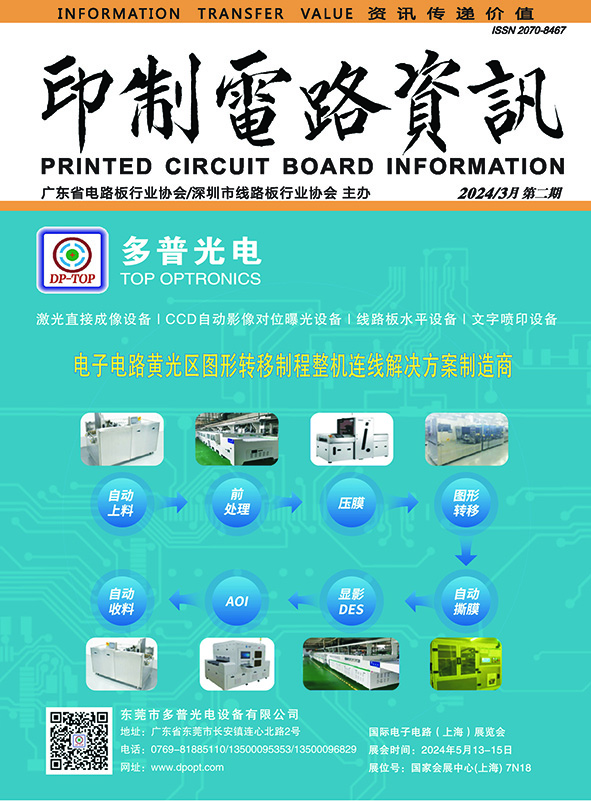
IPC公布近期培训和活动安排
为了使《IPC/JEDEC-9704印制线路板应变测试指南》标准让更多的人受益,IPC将在上海举办一次精解讲座。本讲座旨在对IPC/JEDEC-9704标准进行深入的解析,同时通过实际的操作让学员更为全面的了解应变测试。
本次培训将于8月26~27日在上海谈家渡路28号盛泉大厦9楼举办。为期两天的课程主要围绕“印制板弯翘管控方法概览”和“改善印制板弯翘的方法”两部分。其中“印制板弯翘管控方法概览”分析介绍了应变测量基础、印制板弯翘应变度量标准以及参考应变测量系统能力三个要点;而“改善印制板弯翘的方法”则主要分析组装过程中应变测量的典型变异来自:应变片类型,粘贴工艺,定位准确度学和数据采集系统。为了帮助解决这些问题,提供了一个应对策略表。
地点:中国上海
时间:2010年8月26-27日
适用人群:ICT、FCT等测试组装治具设计,系统组装,电子产品机械机构设计,可靠性,失效分析,质量和品保等相关人员。
收费:会员价:RMB1000/ 非会员价:RMB1500
(8月6日前报名的同事将获赠一张世博会门票)
附:讲座大纲
DAY ONE 第一天
Session 1 - Board Flexure Control Methodology Overview 印制板弯翘管控方法概览
Board Flexure Overview - As chip package size and ball pitch have decreased, second- level interconnect failure due to manufacturing over- flexure has become an increasing concern, especially when combined with the metallurgical changes for lead free manufacturing.
印制板弯翘概览 —— 随着芯片封装尺寸和焊球间距日益减小,由制造等过程中弯翘导致的二级互连失效逐渐引起人们的关注,特别在进入无铅时代以后这一问题显得更为突出。
Fundamentals of Strain Measurement –Definition of strain, stress, board flexure and strain gages.
应变测量基础——介绍应变,应力,印制板弯翘的概念以及应变片等。
Board Flexure Strain Metric– Diagonal strain vs. principle strain.
印制板弯翘应变度量标准——对角线应变和主应变的区别和联系,以及两种度量标准在业界的应用现状。
Reference Strain Measurement System Capability –Data acquisition (sampling rate), channels, filter and power supply.
参考应变测量系统能力——讨论印制板应变测量对数据采集(采样频率),通道,滤波器和电源等的基本要求。
Session 2 - Strain Measurement Board Preparation 应变测量板制备
Strain Gage Attachment Generic Reference Process - Strain gage rosette,board preparation,locating the gage,attaching the gage and final preparation.
应变片粘贴通用参考方法 —— 应变片的选用,测量板预处理,应变片定位,粘贴和终处理等。(学员可在培训现场进行该环节的实践操作)
Session 3 – Strain Measurement 应变测量
Assembly Line Strain Measurement - Test planning (identifying assembly steps, sample test plan); Testing (zeroing strain gages, assembling through hole mounts, ICT, functional testing and system assembly.)
组装过程的应变测量 —— 测量计划(确定需要进行测量的组装步骤,测量计划表样例);测量(应变片归零,通孔元器件的插装,在线测试,功能测试和系统组装等。)(学员可在培训现场进行该环节的实践操作)
Shock Strain Measurement - Strain gage location, equipment set-up, data collection and data analysis.
机械冲击中的应变测量 —— 应变片粘贴位置(不同于组装过程中的应变测量),测量设备设置,数据采集和分析。
Session 4 – Reporting procedure 报告制作
A good report must have: Components tested, Assembly steps tested, Maximum strain metric value for each component and assembly step and Pass or fail indicator.
一份好的应变测量报告必须包括:被测量元器件,被测量组装步骤,各元器件和组装步骤的最大应变值以及通过/失败结论等。
A completed strain report must consist of: Data summary, Pictures of boards and components, Strain graphs and Raw Data files
一份完整的应变测量报告必须包括:数据摘要,测量板和元器件的图片,应变曲线以及原始数据等。
DAY TWO 第二天
Session 1 - Reducing Board Flexure in Assembly Process 改善印制板弯翘的方法
Controlling Strain in ICT fixtures: Effect of fixture speed, small bend radius, probe density and pushdowns.
ICT治具的应变改善:治具速度,小弯曲半径,测试探针密度和下压模块对应变的影响。
Controlling Strain in other site, such as FCT, system assembly, and so on…
其它组装站别的应变改善:例如ICT,系统组装等。
Session 2 – Troubleshooting – 问题解决
Typical sources of variation in assembly line strain measurement include: strain gage type, attachment process, placement accuracy to location target and data acquisition system. In order to help with troubleshooting these variations, a Response Flow Checklist (RFC) has been provided.
组装过程中应变测量的典型变异来自:应变片类型,粘贴工艺,定位准确度学和数据采集系统。为了帮助解决这些问题,提供了一个应对策略表。
 |
 |
 |
|||



